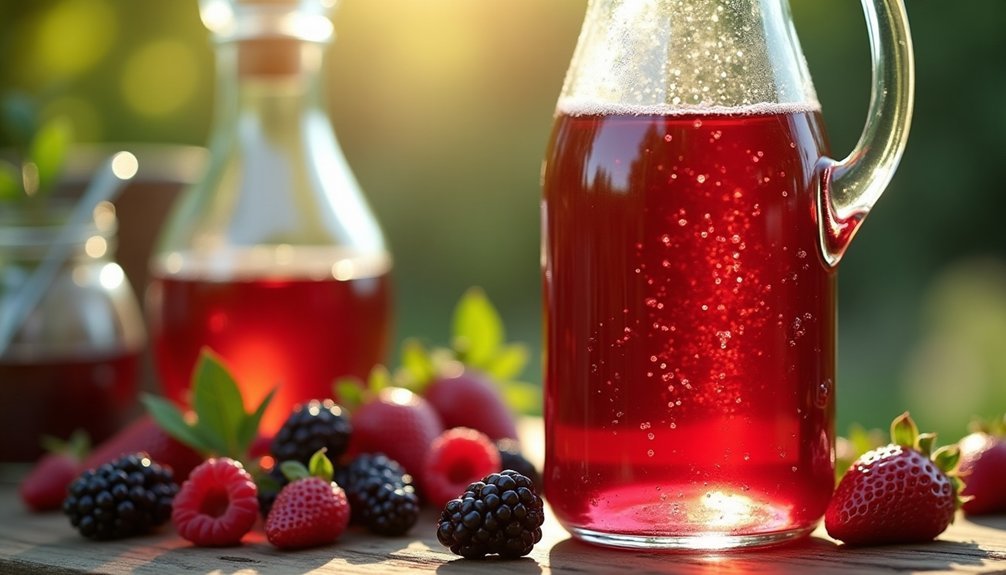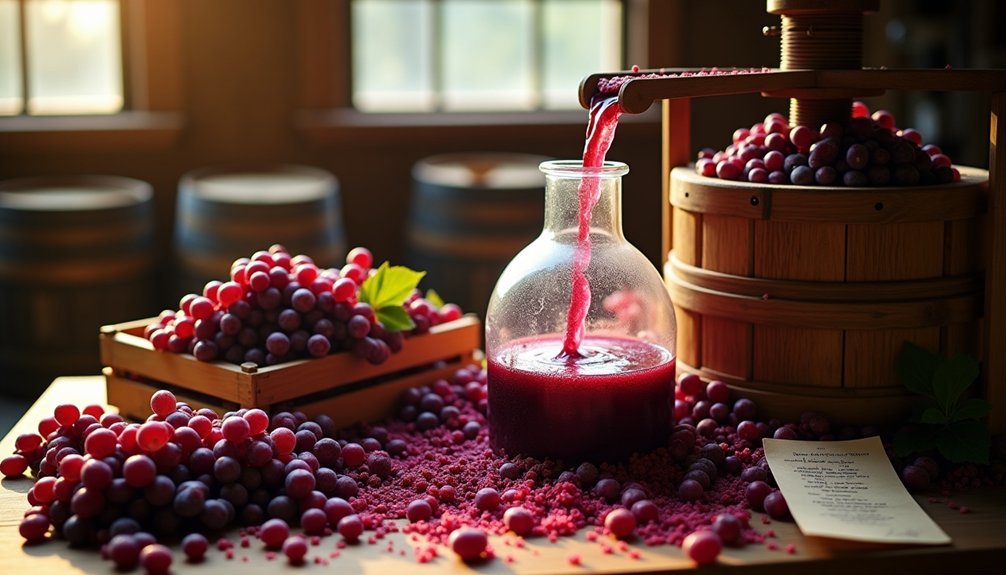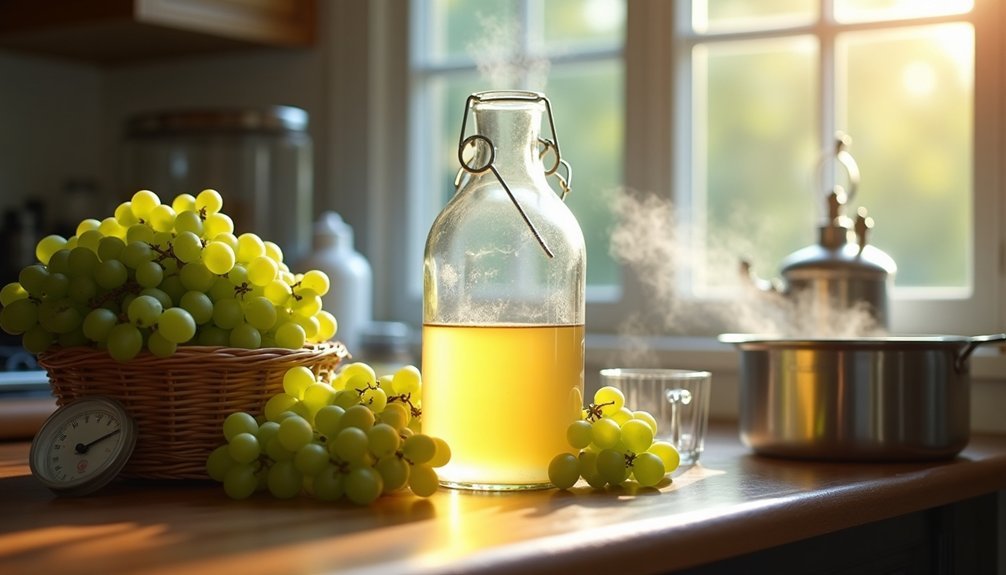I’ve been brewing my own summer fruit wines for over a decade, and I’m still amazed at how simple the process really is. You don’t need fancy equipment or specialized knowledge to transform those extra strawberries or peaches into something truly special. Whether you’re a complete beginner or an experienced homebrewer, there’s something magical about watching fruit transform into a vibrant, flavorful wine. Let me show you how to capture summer in a bottle with just a few basic ingredients.
Why You’ll Love This Drink
Whether you’re a novice or experienced home brewer, this summer fruit wine will quickly become your seasonal favorite. I’ve perfected this recipe through years of trial and error, creating a versatile drink that showcases summer’s bounty.
What makes this wine special is its adaptability—use whatever fruits are in season, from strawberries to peaches. The simple ingredient list means you won’t need specialized equipment or hard-to-find additives to get started.
I love how this recipe strikes the perfect balance between sweetness and acidity, producing a rejuvenating drink that’s ideal for warm evenings. The process itself is straightforward, requiring minimal hands-on time. Plus, you’ll gain immense satisfaction from transforming basic ingredients into a delicious homemade wine that impresses friends and family.
Ingredients
Success in fruit winemaking starts with selecting the right ingredients. I’ve found that fresh, ripe summer fruits make the best wine base – strawberries, peaches, plums, or blackberries are all excellent choices. You’ll need about one gallon of crushed fruit for a standard batch.
The sugar is essential; I use 3-4 pounds of white granulated sugar depending on how sweet I want the final product. Always opt for non-chlorinated water, as chlorine can interfere with fermentation.
For the yeast, I recommend using 1/8 teaspoon of specialized wine yeast rather than bread yeast for better flavor development. While optional, small amounts of acid blend and yeast nutrient will improve your wine’s balance and fermentation health.
Directions
Once you’ve gathered all your ingredients, it’s time to start the winemaking process. I begin by thoroughly mashing the fruit to create what’s called “must” – this releases all the juices and flavors. Next, I dissolve the sugar in non-chlorinated water and combine it with my fruit must in a sanitized fermentation container.
I add my yeast (and any optional additives like acid blend or tannin), stir well, then attach an airlock. The mixture needs to ferment at room temperature for 1-2 weeks until the bubbling stops. When fermentation completes, I strain out all solids and rack the wine off the sediment into a clean vessel.
Don’t rush! Allow your wine to age for several weeks before bottling. Keep it out of direct sunlight during the entire process.
Substitutions and Variations
Although the basic fruit wine recipe provides a solid foundation, you can easily customize it to suit your taste preferences and available ingredients. I’ve found that almost any ripe, flavorful fruit works well – from blackberries and peaches to plums and cherries.
You can adjust the sweetness by varying the sugar amount; use 3 pounds for a drier wine or 4 pounds for something sweeter. Honey makes a wonderful alternative to sugar, though you’ll need about 25% more by weight.
Don’t have wine yeast? Regular bread yeast will work, but champagne yeast creates a cleaner flavor. For a more complex profile, I sometimes mix different fruits together – strawberry-rhubarb and apple-pear are delightful combinations.
For natural tannins, add a handful of oak chips or strong black tea instead of commercial additives.
Additional Things to Serve With This Drink
Fruit wine’s versatility extends beyond the glass into wonderful food pairings that enhance its flavor profile. I recommend serving strawberry wine with creamy cheeses like Brie or mascarpone, while grape-based wines complement sharper varieties such as cheddar or gouda.
For a delightful summer gathering, I create charcuterie boards featuring thinly-sliced prosciutto, dried fruits, and honey-drizzled nuts that bring out the wine’s natural sweetness. Light pastries and fruit tarts make excellent dessert pairings.
Don’t forget presentation elements! I serve my homemade fruit wines in stemmed glasses with fresh fruit garnishes that match the wine’s base ingredient. Consider offering infused water alongside for guests to cleanse their palates between sips, truly appreciating your handcrafted summer creation.
Final Thoughts
While crafting your own summer fruit wine requires patience, I’ve found the results are absolutely worth the effort. The satisfaction of transforming simple fruits into a complex beverage is unmatched, especially when sharing it with friends on warm summer evenings.
Don’t be discouraged if your first batch isn’t perfect. Wine-making is both science and art—each batch teaches you something new. I’ve learned that quality ingredients, proper sanitization, and temperature control make all the difference.
Remember that homemade wine continues to evolve in the bottle. What tastes sharp today may mellow beautifully in six months. I encourage you to keep notes on each batch, recording your process and results. This documentation will prove invaluable as you refine your technique and develop your signature summer fruit wine.



